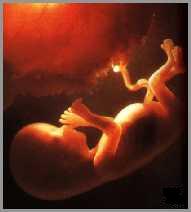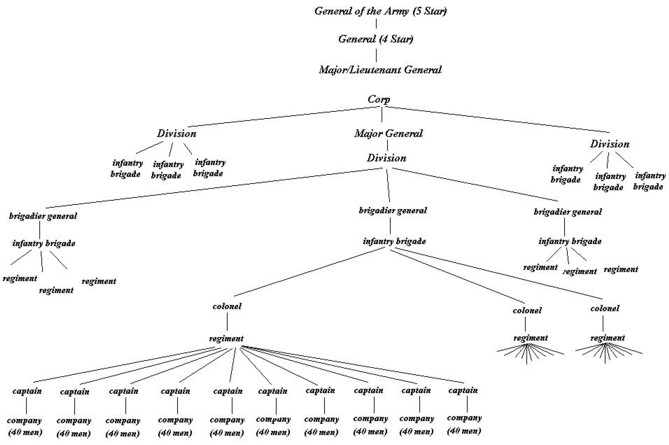Introduction to the Idea of the Soul
Socrates spoke of the soul as the true self. But is this true? And is there really a soul? How can we be sure that happiness is the perfection of the soul if we are not sure whether or not the soul actually exists?
These are important questions, but Socrates does not answer them. Rather, it is Plato who attempts to prove the existence of the soul through reason. And the best place to begin reasoning to the existence of the soul is to consider what it means to be a living thing. How do we know that something is alive or not? And would we consider a computer to be a living thing?
If we want to determine whether or not something is alive, we usually do something that we anticipate will cause a certain kind of reaction. We might poke someone to see if he moves, or we might listen for a heartbeat or feel for a pulse, or check for breathing. The reason we do these things is that we understand that life has something to do with movement. But even non-living things move, like planes, trains, and automobiles. The difference, however, is that a plane, for example, does not move on its own. The football, baseball, and billiard ball move not on their own, but as a result of being moved by something outside themselves. Hence, the principle (source) of motion of a non-living thing is extrinsic to the moving thing. But a living thing moves itself (self-ambulation). Hence, the principle of motion of a living thing is intrinsic.
Living things have an intrinsic principle of motion. But what exactly is this intrinsic principle? Consider what living material things have in common with non-living material things? The answer is, evidently, matter. A chemist might tell us that our bodies are 65% Oxygen, 18% Carbon, 10% Hydrogen, 3% Nitrogen, etc. But is a thing alive by virtue of its matter? Clearly not, for if a thing is alive by virtue of its matter, then all material things would be living. But this is clearly not the case. Matter is inert. And so a thing is alive by virtue of a principle that is non-matter, or immaterial. For Plato, this is the soul. He writes:
...self-motion is precisely the essence and definition of soul. Body that has an external source of motion is soulless, but a body moved from within is alive or besouled, which implies that the nature of soul is what we have said. (Phaedrus, 245e-246a)
The Greek word for soul is psyche, which is often translated as "mind". Recall that the object of the intellect is the essence of things. Concepts, as they exist in the mind, are universal, thus they are not material. But a material thing cannot be the receiver of an immaterial form; rather, a material thing, like a blob of puddy, receives a material form or imprint. The mind, which receives immaterial forms or concepts (ideas), is therefore immaterial. But there are not two immaterial principles within man, for he is not two things, but one thing. The soul of man is an intellectual soul, capable of apprehending the natures of things. As Plato says: "The soul resembles the eternal Ideas, which are the proper object of all its attentions" (Phaedrus, 247d).
Now Plato understood the relationship between soul and body dualistically. In other words, he regarded man as two substances (body and soul). The body, for Plato, is the prison of the soul: "Every seeker after wisdom knows that up to the time when philosophy takes over his soul is a helpless prisoner, chained hand and foot inside the body, forced to view reality not directly but only through the prison bars, and wallowing in utter ignorance" (Phaedo, 82e).
The problem, however, is that we do not experience ourselves as two substances, but one. How, then, can we talk about body and soul without implying that they are two "things"? Plato was not able to resolve that question, but Aristotle had more success, for he seemed to be more interested in the philosophy of human nature than was Plato, and he seemed to have taken matter more seriously than did Plato.
Aristotle on the Soul
The Four Causes
In order to come to an understanding of Aristotle's notion of the soul, it is best to first come to an understanding of his doctrine of the four causes. According to Aristotle, four causes are involved in any change. In other words, there are four causes, not one or two, that go into a sufficient explaination of change. For example, consider the simple change of a sculptor who changes marble from a cube to a statue of a dove. The marble is not enough to account for the change; for the marble does not completely explain the new product. One requires further causes. These are:
- The agent cause - that by which there is coming to be.
- The formal cause - that for the sake of which there is coming to be.
- The material cause - that from which there is coming to be.
- The final cause - that for the sake of which there is coming to be.
In the change from marble cube to marble dove, the agent cause, or that by which there is a change, is the sculptor himself. He is the agent who moves the marble from being potentially a marble dove to being actually a marble dove.
But in order to carry out the change, the agent cause (the sculptor) requires something further, namely that for the sake of which he will act, that is, a reason to act. He requires a form that the marble at this point does not have, namely the form of a dove. Without a form, there is no reason to act, that is, there is nothing for the sake of which to move. "Dove" is the formal cause, or that for the sake of which the change takes place.
In themselves, however, forms do not change. "Triangle" or "cube" does not change except in as much as such forms exist in matter. In other words, only marble cubes or wooden triangles or metal rectangles can undergo change. Try destroying "triangularity" or "circularity". We cannot, unless they exist in matter. Then and only then can we change them, for example, burn a wooden triangle in a fire, or melt a square sign made of metal. And so the sculptor cannot move to sculpt a dove unless he has before him some matter, or that from which there is coming to be.
Finally, the agent cause acts for a purpose, that is, an end. The final cause (purpose or end) is defined as that for the sake of which there is coming to be. Notice, however, that this definition coincides with that of the formal cause. That is why Aristotle points out that the final cause is twofold. There is a) the end of the generation and b) the end of the generated. The end of the generation or change is the fully formed dove in the marble; thus, the end of the generation coincides with the formal cause. The end of the generated is the ultimate purpose of his action. In other words, what is the ultimate reason why is he making a dove? We'll say he is making it as an anniversary gift to his parents. "Anniversary gift" is the end of the generated, the final cause, the purpose or end of his action.
Consider that the final cause is the cause of all the other causes. It is "anniversary gift" that moves the sculptor to be an agent cause. Moreover, a sculpture that lasts a day is not all that wonderful, so instead of using a type of matter that will not last, such as chocolate, he uses one that will last a long time as well as one that looks nice. And so it is obvious that the final cause plays a role in determining the material cause. The final cause also plays a role in determining the form. If his parents like doves and his goal is to please them with an anniversary gift, a marble dove is a nice idea, as opposed to a cobra snake or a skull.
The Soul as Form of the Body
Aristotle's understanding of the soul is very different from that of Plato. Plato was a dualist; this means that he regarded the soul as one substance, the body as another distinct substance. Hence, for Plato, man is two substances. This is not the case of Aristotle. Man is one substance. He is a psychosomatic unity (psyche: soul; soma: body).
We have already reasoned that if a thing were alive by virtue of its matter, all material things would be living. But clearly this is not the case. And so a thing is alive by virtue of a principle that is not matter, that is, an immaterial principle. This principle is not a substance, but the formal principle of a substance. Let me explain.
Consider the doctrine of the four causes while we employ an analogy from the realm of art or production. A computer engineer gets an idea for a unique type of computer. He knows what he needs to do to produce it. The first thing he does is to produce a blueprint. He then purchases the matter in order to produce the parts of this computer. He then begins to build his motherboard, sound card, video card, etc. After a week of work, he finishes his computer.

Now the Agent Cause in this case is the computer engineer. The material cause is the matter that went into making the parts. The formal cause was the very idea of the computer, and the final cause was the purpose of the computer.
Now, looking at this computer, ask yourself: "Where is the form of the computer?" The answer is not in the computer, but in the mind of the engineer. The form is the "idea" (eidos) that he originally conceived.
Without that "idea" or form, there is no computer. The engineer could not have gone to work organizing the matter into a unique computer without the idea that governed his action. It was the form in his mind that directed the organization of the matter. The form in his mind was the organizational or unifying principle of this new computer.
Now, let's move to living things. Imagine if that computer were able to build itself, without the help of the engineer. Imagine it creating its own parts, placing them in their proper place, etc. We'd be astounded at such a thing. But that is exactly what happens in living organisms. They self-organize. The fetus in the womb, for example, takes non-living matter from the mother and builds its own spinal cord, brain, organs, etc.

The reason is that the form is not in the mind of some person. Rather, the form is in the organism itself. That is why it is called an organism. Note how the word 'organism' is related to the word 'organized'. The form, recall, is the organizational or unifying principle of the building process. The "idea" in the mind of the computer engineer was the organizing source or principle of the building process. What is the principle of the bio-molecular unity in the living organism? In other words, what is the organizing principle of the living thing? According to Aristotle, it is the form within the organism, or what he calls the "substantial form". It is the function of the form to unify, or to organize, or to form matter. Recall in school when your teacher asked you all to "form a straight line". The command to "form a straight line" or "form a circle" was a command to organize yourselves into a particular form. Wherever you have form, you have unity. The soul is the "substantial form" of a living thing, and so the soul is the organizing principle of the living substance. That is why a corpse decomposes. It has been transformed. It is no longer a unified substance. It is lacking form, that is, substantial form.
Recall that for Plato, the forms of things exist in some intelligible world of forms separated from the sensible world. For Aristotle, this is not the case. Forms exist in substances. A thing is "what it is" by virtue of its form. The soul of a living substance is its substantial form. So it is not that the soul is somewhere inside the body. Rather, there is no body without the soul. It is more true to say that the body is in the soul than it is to say that the soul is in the body.
Let us employ another analogy, one that makes reference to the structure of an army. Consider the basic structure of an army below:

An army has an ordered and organized structure. The principle of that organizational unity is the General (5 star). He has the plan, the strategy, and this plan is communicated to the 4 star General, then to the Lieutenant General, who is in charge of the Corp. The plan does not come from the companies. The companies receive their plan from the captain, who receives it from the colonel, who receives it from the brigadier general, who receives it from the major general, who receives it from the lieutenant general, who receives it from the General of the Army.
If the army is a unified whole, it is so by virtue of one unified plan or idea (form), and that one idea has its source in the General of the Army. Kill the General, and there is no unifying principle; the entire army would be left without a single plan of action. The companies would be left without organization, without unity or form, and so they could no longer work as a unity, but as individual companies with their own plan.
In the same way, the form is the organizing principle of the living body, and that form is in the organism. Just as the companies do not organize themselves, but receive their plan of action from a single principle (ultimately the General), so too the parts of the body are not the source of the organizational unity of the body. Rather, they receive their organization, their unity, from a single principle, namely, the substantial form. Again, wherever you have unity, you have form.
The corpse is like the army without a General. The corpse lacks organizational unity, which is why it decomposes (de-composition; lacking composition or unity). Each part does its own thing, goes its own way, so to speak. There is no longer a single form that unifies the entire substance.
In sum, the soul is the substantial form of the body. It is the life principle of a living substance. It is that which makes the substance to be the kind of thing it is. Just as you cannot talk about a structured army as one thing, and a plan as another -- for without the plan, there is no structured army -- , in the same way you cannot talk about the body as one thing, and the soul as something else, for example, as something inside the body. Without a soul or form, there is no body.
Next Page:
Chapter 12: Some Points on the Powers of the Soul
1,
2,
3,
4,
5,
6,
7,
8,
9,
10,
11, 12,
13,
14,
15,
16,
17,
18,
19,
20,
21,
22,
23,
24,
25,
26
Article copyrights are held solely by author.
[ Japan-Lifeissues.net ] [ OMI Japan/Korea ]